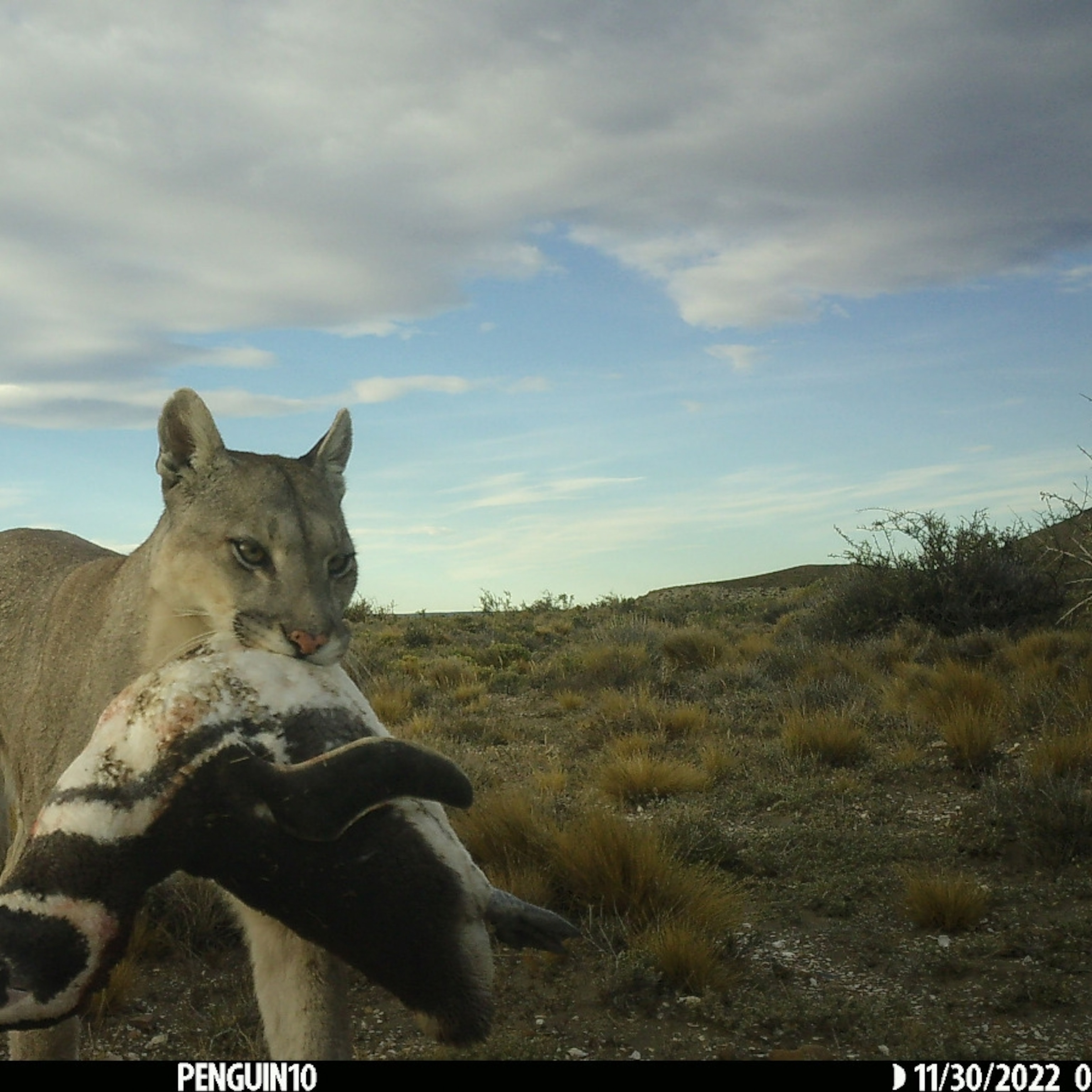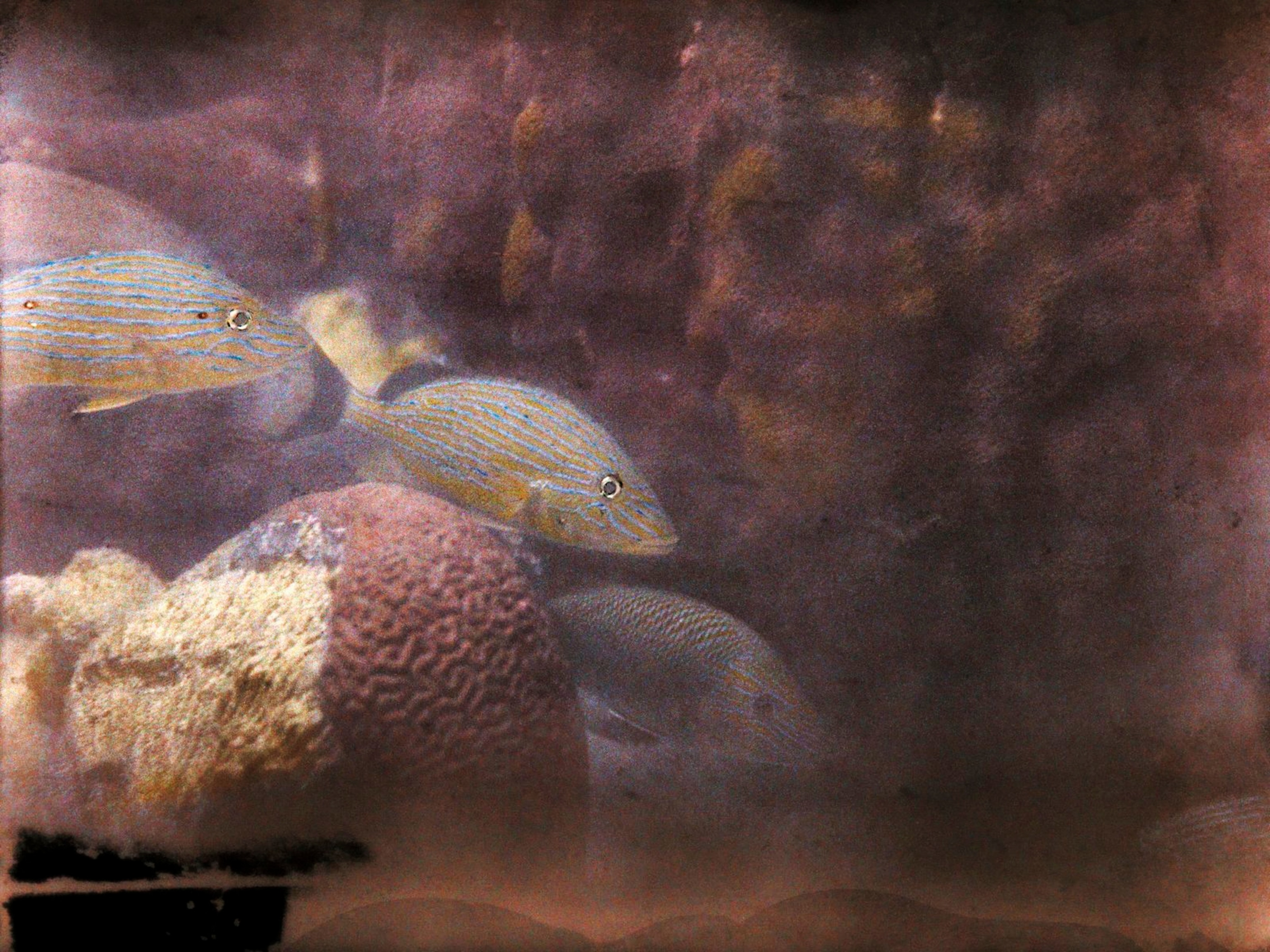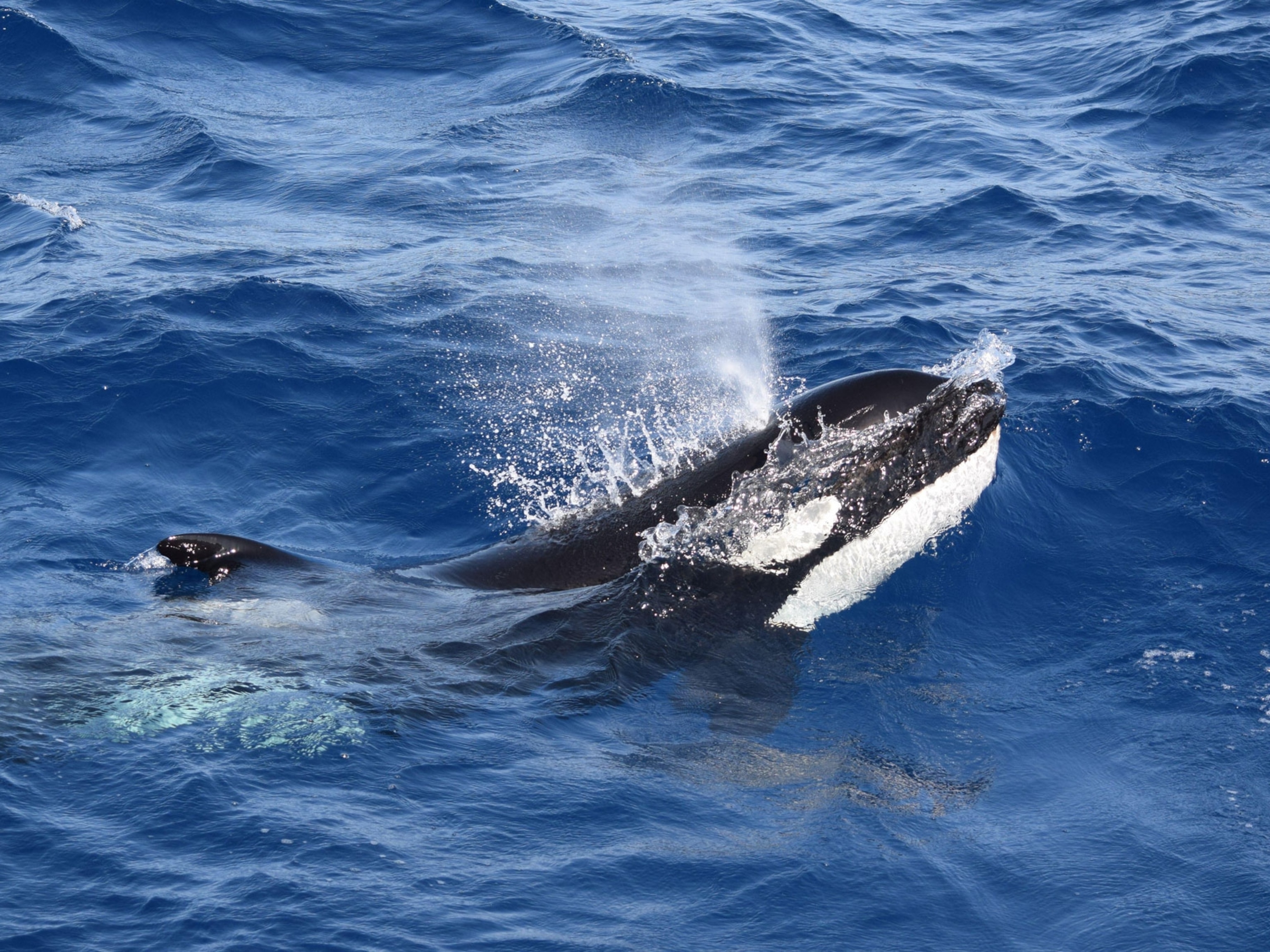Leopard Seals Are Bullies, Thieves, New Video Shows
The top predators reveal some surprising moves in a first look at their underwater lives.
Leopard seals can grow up to 12 feet (about 4 meters) long and sport heads bigger than a grizzly bear. Their razor-sharp teeth are made to rip apart seals, and they've been known to snatch people and drag them underwater.
But studying them has been a challenge, and so this top predator has largely remained a mystery—until now.
Over 50 hours of video footage of leopard seals in Antarctica show them doing things we've never seen before, including stealing food from each other, dragging fur seal pups right off beaches, and rooting out fish from seafloor crevices.
The seals also engage in what scientists think is food caching—or taking prey only to hide it on the seafloor to save for later. (Read about how a leopard seal "fed" a photographer penguins.)
The animals' solitary nature and preference for pack ice—chunks of ice far offshore often separated by hundreds of miles of open ocean—made it nearly impossible to study them in the past.
No one wants to squeeze themselves onto a small chunk of sea ice to attach a satellite tag or video camera to a polar bear-size predator, says Kyler Abernathy, National Geographic's director of research for remote imaging. Leopard seals eat pretty much everything else out there, he says. "They're the badass of the seal world."
But the recent shrinking of sea ice around a land-based science station at Livingston Island's Cape Shirreff encouraged leopards seals to start congregating on nearby beaches.
This gave researchers the opening they needed to attach video cameras—dubbed Crittercams—to seven female leopard seals to see what these enormous animals did all day.
Scientists captured and sedated the same group of seals in January and February 2013 and 2014 in order to glue Crittercams to the animal's backs just behind their heads. The team reported their results in the journal Animal Biotelemetry this month.
Shock and Awe
"I've been personally observing these animals for the past ten years," says Doug Krause, a marine mammal expert with the National Oceanic and Atmospheric Administration (NOAA). But the study leader was shocked when he saw the Crittercam footage.
Instead of heading offshore to supplement their diet with mouthfuls of krill—as scientists had assumed based on analyses of seal poop—leopard seals were actually sticking close to shore and hunting fur seal pups and fish.
In fact, one female leopard seal spent most of her time along the seafloor looking for bottom-dwelling fish. "We didn't expect that at all," Krause says.
The video also showed that individual leopard seals used different techniques to hunt and eat their prey. Some stalked and flushed fish from crevices, while others chased their prey in open water. Others gobbled their meals whole, while more discerning animals removed the fish's head and ate just the body.
The video showed that not only are leopard seals eating fur seals and penguins, the predators are competing with their prey for fish and krill, says David Hocking, a marine mammal expert at Monash University in Melbourne, who was not involved in the study.
Bullies
Another surprise was that leopard seals stole food from each other.
Scientists have observed instances in which food passes from one leopard seal to another, says Krause. But scientists couldn't see any aggressive behaviors during these exchanges—and since there was no way to know what went on underwater, they speculated the behavior was a kind of cooperative hunting.
Now they know better. "Our female with the camera catches a [seal] pup, she takes it [offshore] to process it, she's eating it like normal, and then all hell breaks loose," says Krause. "You see the jaws of another leopard seal in her face and they're just striking at each other."
The researchers saw this happen six times, and the camera-bearing seal—which was the smallest leopard seal in the study—lost her meal every time.
It's not unheard of for animals to steal food from each other, says Phil Trathan, a marine predator specialist with the British Antarctic Survey in Cambridge. Seabirds called skuas are notorious for stealing meals like penguin eggs from each other in mid-air.
"I've actually seen the egg crack because the bird that stole it bit too hard and [another] skua steals the yolk that falls out," says Trathan, who wasn't involved in the study.
But food stealing, also known as kleptoparasitism, is less well known in marine mammals like seals.
Savers
Food caching, or saving kills to eat later, was also an unknown behavior in leopard seals prior to this video study. The footage showed leopard seals picking up dead penguins or fur seals they found on the seafloor and eating them. (See our favorite pictures of penguins.)
There's a possibility that the leopard seals were scavenging those meals, says NOAA's Krause. But when researchers approached one leopard seal around a possible cache site, it displayed guarding behavior, suggesting it was protecting a previously captured meal. Also, the carcasses were at a depth they wouldn't normally be unless something had placed them there. Preparing penguin, pup, or fish carcasses before consumption happens at the surface, not down below.
So Krause and colleagues think it's likely that the leopard seals were eating kills they—or another leopard seal—had previously hidden away. (Learn how Crittercam helped scientists solve a Hawaiian monk seal mystery.)
Both Hocking and Trathan were excited to get this unprecedented glimpse into what leopard seals do underwater.
"One of the great things about this work is that it also shows that leopard seals are individuals, with different animals using hunting tactics specific to them," says Hocking.
Follow Jane J. Lee on Twitter.








